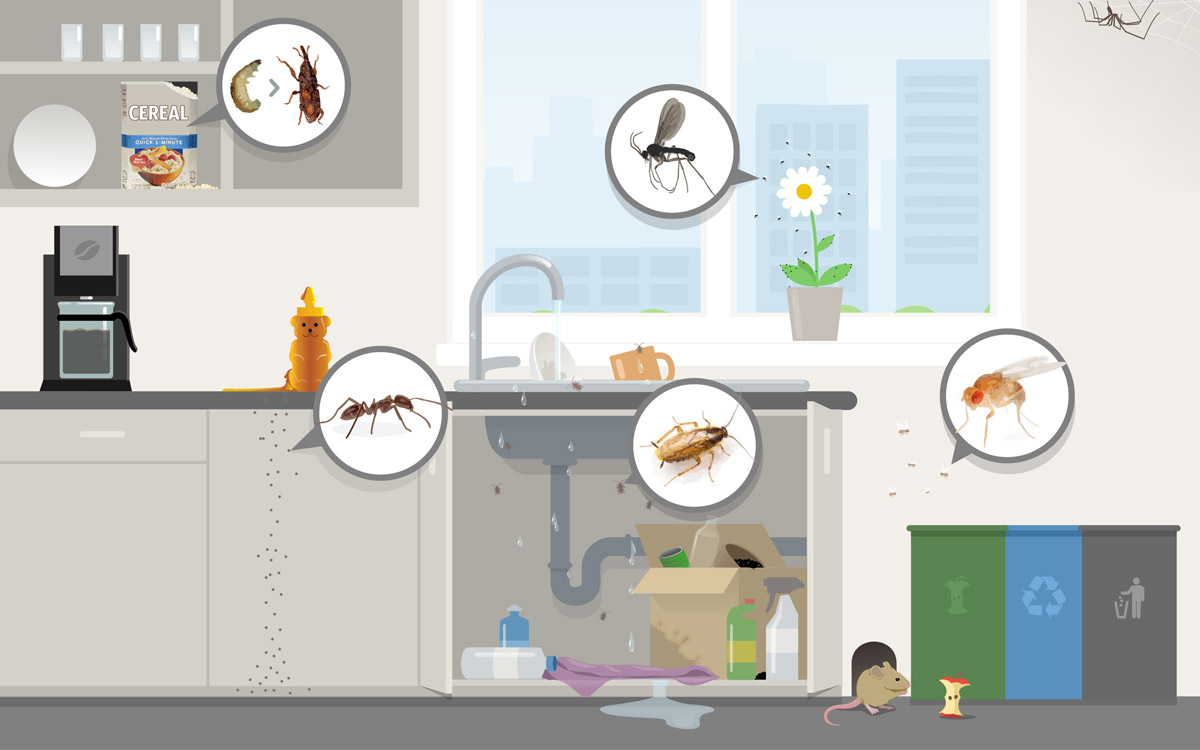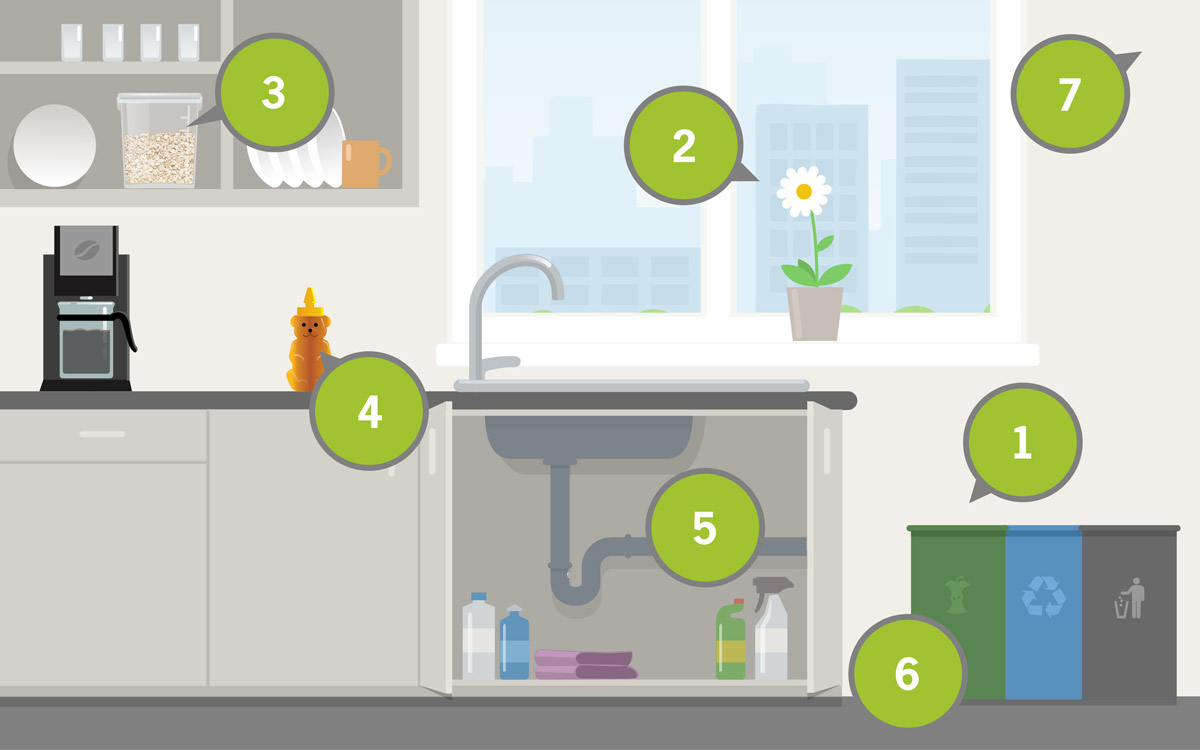
Got pests? tell the building manager!
The sooner you let building management know about pest problems or sanitation issues, the easier it is to correct them.
Why are there pests in my office?
Pests are after the same things all living things need to thrive - food, water, and shelter. Below are the most common pests that we find in offices, their common routes of entry, and the conditions that benefit them the most.
How Can IPM Help Prevent Pests?
By using the simple Integrated Pest Management (or IPM for short) methods below you can prevent pest infestations. Education is the first step for prevention, so please join the team and learn how you can help.

- FRUIT FLIES feed on yeasts present on ripe fruits and vegetables, food scraps, and sugary liquids. The bottoms of waste totes, dirty drains, forgotten food containers, or food scraps left in desk wastebaskets over the weekend can all be sources of fruit flies.
Solution: Don’t leave fruit or vegetables out overnight and be sure to throw food away in the compost bin. - FUNGUS GNATS may buzz around your face and computer screen as you’re trying to work. If you notice them, look for the usual culprit—over watered plants or potted plants with broken down, soggy soil.
Solution: Don’t overwater potted plants and/or repot the plants in new soil every one to two years.. - PANTRY PESTS include beetles and moths that lay eggs in nuts, cereal, crackers, and even chocolate. They can show up when someone leaves uneaten snacks in a drawer for months, or from the crumbs from lunches taken at desks that haven’t been cleaned-up.
Solution: Keep snacks and other food in rigid, sealed containers, not in plastic bags. - ANTS often come indoors to find food during summer and fall when they no longer find food outside. Rain or irrigation will sometimes drive ants indoors to escape flooded conditions.
Solution: Clean up food spills and wipe down counters by the end of each day. If you see an ant trail wipe it up with a soapy water solution. - COCKROACHES thrive in cluttered conditions that provide food and water, preferring to live in cardboard. They can get into buildings by slipping under doorways, on personal belongings from home or from food deliveries and groceries.
Solution: Reduce clutter under sinks, report plumbing leaks to management, and clean food-soiled dishes, utensils, and surfaces by the end of each day. - RATS & MICE squeeze under doors or through holes around utility penetrations. They nest in clutter and will chew or gnaw almost anything, including paper, fabric, and plastic.
Solution: Reduce clutter in work areas and store items up off the floor in cabinets, on racks, or in bins. - SPIDERS are beneficial predators of mosquitoes, gnats, and house flies. Most are harmless. Black widow spiders rarely live inside office buildings, and brown recluse spiders do not live in California.
Solution: Practice good housekeeping habits to limit food sources and harborage for spiders.